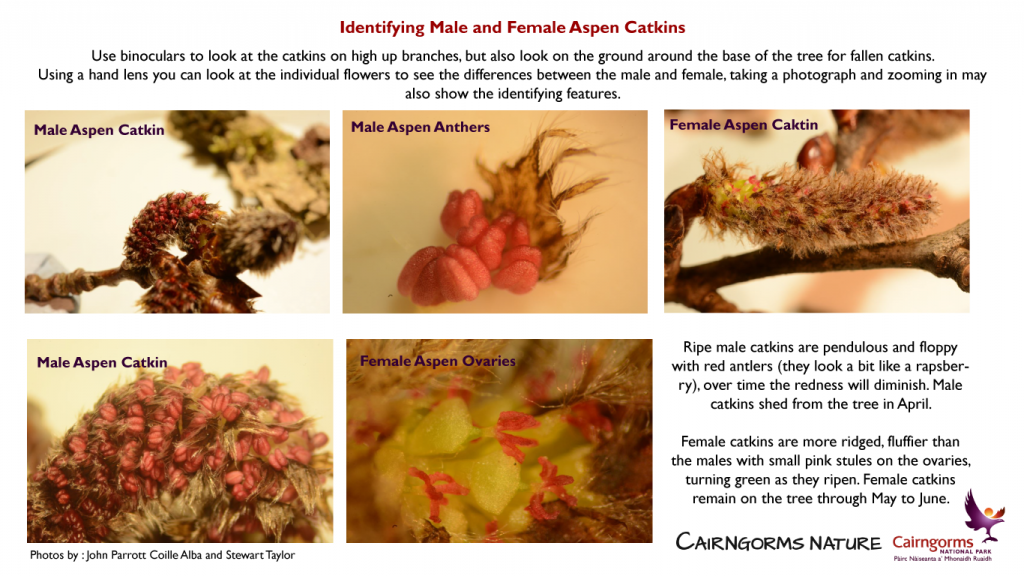Blooming bumper year for Aspen trees
20th March 2019

2019 is a bumper year for flowering Aspen in Scotland. Over the next month we need your help to record the location of flowering Aspen trees and if possible, record the sex of these trees. Knowing where these trees are will help the conservation of this important tree in the Badenoch and Strathspey area.
Aspen is a beautiful and iconic tree that is hugely important for many species of specialised, rare and threatened wildlife. The UK’s most important stands of Aspen are found in Badenoch and Strathspey. Young, old and both living and decaying Aspen trees provide homes for a wide range of species such as the Dark bordered beauty moth found a just a few sites in Scotland and the endangered Aspen hoverfly. Around 300 different lichens, including some of our rarest and most threatened species are also found on Aspen.
Aspen is dioecious, meaning individual trees are either male or female. There is an imbalance in the sexes, females are outnumbered, with about 2.5 males to every female. Aspen rarely flowers and produce seed in Scotland, usually spreading by suckering from the tree roots forming colonal stands of the same sex. In years of severe drought (like last year), the stress of limited water causes Aspen to flower the following year. The last time that flowering was widely reported in Scotland was over 20 years ago in 1996! 2019 is a bumper year for flowering Aspen, providing a unique opportunity to record information on flowering that may not come around again for many years.
Cairngorms National Park Authority are working with Aspen experts, Coille Alba, Scottish Natural Heritage and Butterfly Conservation to promote and conserve Aspen. We want to see more Aspen throughout the National Park, by protecting and enhancing existing stands, encouraging natural regeneration and planting new stands of Aspen. Understanding where flowering trees are and the sex of those trees is vital to aid seed collection. Root suckers can also be collected where again, it is important to know the sex of the trees. Specialist nurseries will grow the seed or suckers. Knowing the origin and sex of the seed will ensure Aspen of local provenance is planted and ensure both male and female trees are planted together or added to existing single sex stands.
What to look out for and record
We want records of the location of flowering Aspen trees, and if possible the sex of the catkins if they are easily visible. You can use binoculars to look at the catkins on high up branches, but also look on the ground around the base of the tree for fallen catkins. Ripe male catkins are pendulous and floppy with red anthers (they look a bit like a raspberry), over time the redness will diminish. The female catkins are more ridged, fluffier than the males with small pink styles on the ovaries, turning green as they ripen. Female catkins remain on the tree through May to June, whereas males are shed in April. If you have a hand lens, look at individual flowers and you will be able to see the differences between male and female. Taking a photograph and zooming it may also show the identifying features. As well as recording flowering Aspen it s also important to capture information on non-flowering Aspen trees too. To help provide us with accurate location information you can use https://gridreferencefinder.com/ there are also smartphone Apps that provide this function.
Complete the Survey Here:
Create your own user feedback survey
Alternatively you can email your record to us at [email protected] – and include the relevant information.
